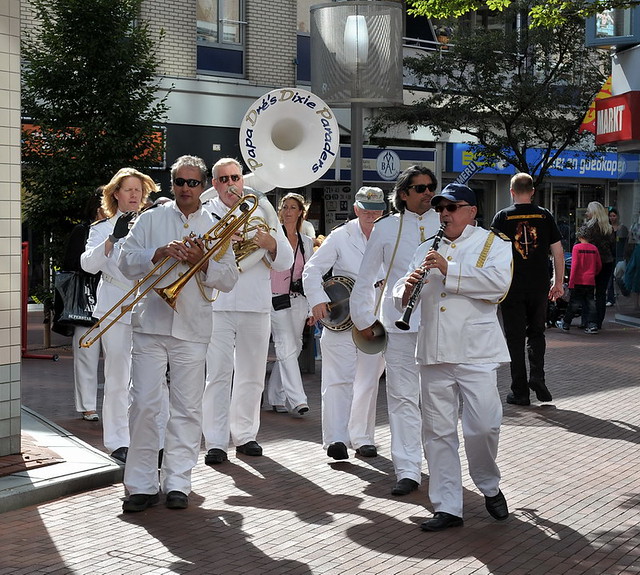 |
| Head and shoulders portrait of jazz musician Louis Armstrong. (Photo credit: Wikipedia) |
Trumpets have been in existence since primitive times, but they did not really gain the recognition they deserved until the infiltration of jazz into the music world. When Buddy Bolden altered his own music style in the 1890's, it had the first inklings of what jazz music would become with its hearty spirit and spontaneity. He eventually leads the first genuine New Orleans jazz band. Continuing to invent jazz music was Freddie Keppard and Joe "King" Oliver playing the cornet as the lead instrument.
Then along came Louis Armstrong from a poor section of New Orleans where the heroes of the neighborhood were gamblers and pimps. His first musical instrument, within the family of trumpets, was a long, tin horn that he would blast while working on a coal delivery wagon to let clients know the wagon was coming. At age 10 Louis Armstrong had earned enough money to buy a battered cornet in a pawnshop. By age 11 he had left school, left his job, and organized a street corner quartet. Unfortunately, while on the street he committed some minor crimes and was sent to reform school at the age of 12. While in reform school Louis Armstrong joined the band and developed his talent. He became the leader of the band which changed his reputation. By the age of 13, he was back on the street and found small jobs to keep himself out of trouble.
As a teenager, Louis Armstrong worked with professional musicians and joined Fate Marable's band playing on a riverboat in Mississippi. By his early twenties, he could outplay any trumpets at cutting contests where soloists improvised until one was clearly outperforming the others. With the addition of 23-year-old Lois Armstrong to the Fletcher Henderson band in New York, the band began to really swing with their new featured soloist. A year later he formed his own group in Chicago called the Hot Five. He organized the band and music around the solos which became one of the key characteristics of modern jazz.
Louis Armstrong became known as the father of modern jazz trumpets and the first modern jazz soloist. He greatly extended the range of trumpets as he could hit high notes that none of his peers could reach. His main contribution to jazz was his sense of rhythm which had a natural beat that made anyone listening want to get up and dance. Louis Armstrong taught the world how to really swing. He also taught jazz musicians how to extend the melodic line with improvisations on trumpets. Louis Armstrong used trumpets to belt out loud, sharp cutting sounds that commanded his listeners to pay attention. He had made trumpets the leading instruments with cornets virtually disappearing from the jazz scene.
Trumpets were not the only driving force in Louis Armstrong's career. Not only did he extend the range of trumpets, but he also showcased the extension of his own range of talents. He had a unique compositional and vocal ability, he was comedic, he had charisma, and he had charm. All of these talents wrapped up together made for a famously popular musician and showman.
Dianna Joseph is the owner of DJ Music Store. She is a saxophonist, novice pianist, and novice guitarist. In addition, she is an occupational therapist who works with a host of disabilities utilizing sensory integration and neurodevelopmental therapy in combination with music and a variety of other techniques to assist these persons in achieving the highest level of function and quality of life possible. Article Source: EzineArticles |



